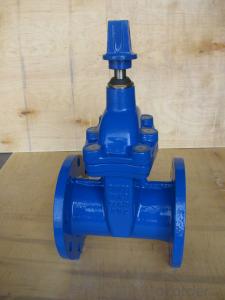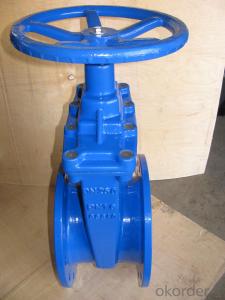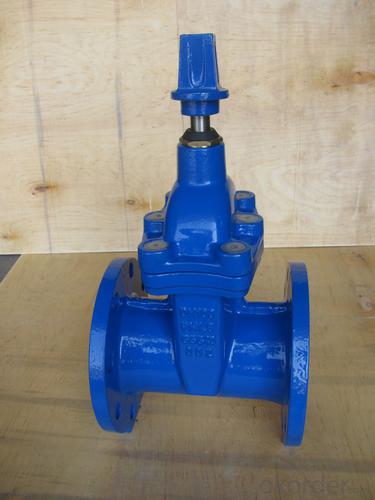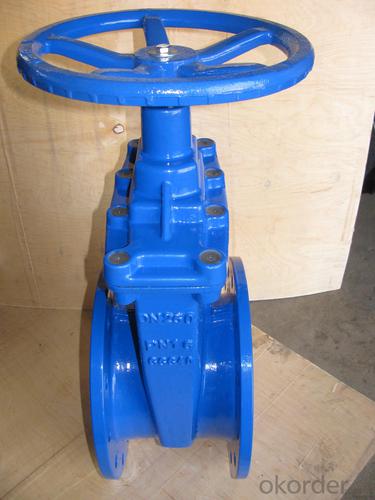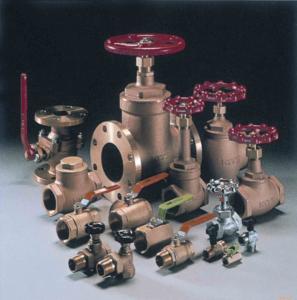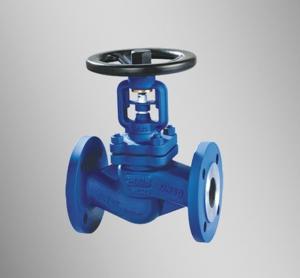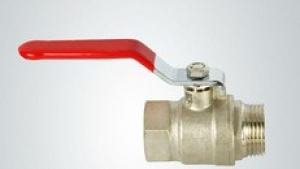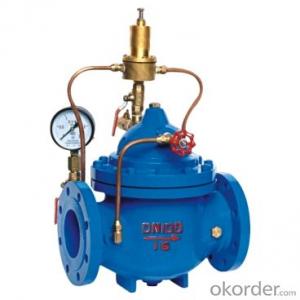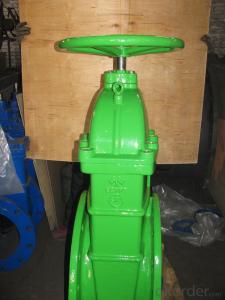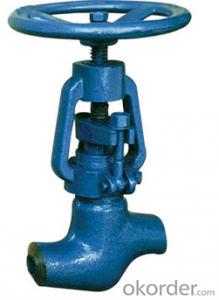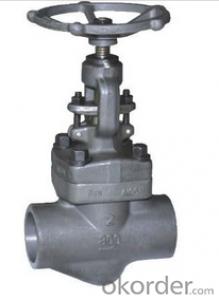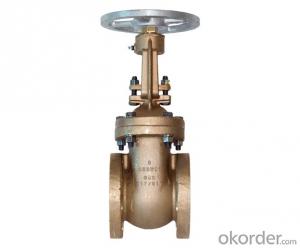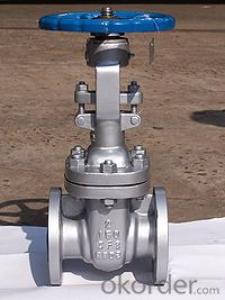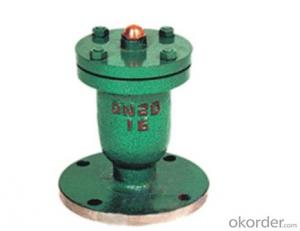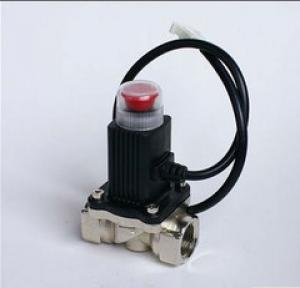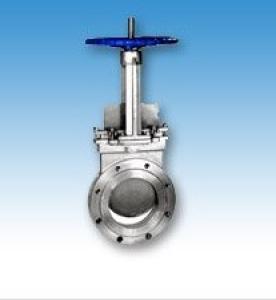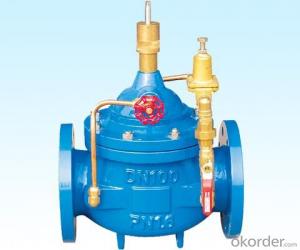Valve with Positioner AVP300/301 on Sale
- Loading Port:
- Tianjin
- Payment Terms:
- TT OR LC
- Min Order Qty:
- 100 pc
- Supply Capability:
- 10000 pc/month
OKorder Service Pledge
OKorder Financial Service
You Might Also Like
1.Structure of Gate Valve Description:
A gate valve, also known as a sluice valve, is a valve that opens by lifting a round or rectangular gate/wedge out of the path of the fluid. The distinct feature of a gate valve is the sealing surfaces between the gate and seats are planar, so gate valves are often used when a straight-line flow of fluid and minimum restriction is desired. The gate faces can form a wedge shape or they can be parallel. Gate valves are primarily used to permit or prevent the flow of liquids, but typical gate valves shouldn't be used for regulating flow, unless they are specifically designed for that purpose. Because of their ability to cut through liquids, gate valves are often used in the petroleum industry. For extremely thick fluids, a specialty valve often known as a knife valve is used to cut through the liquid. On opening the gate valve, the flow path is enlarged in a highly nonlinear manner with respect to percent of opening. This means that flow rate does not change evenly with stem travel. Also, a partially open gate disk tends to vibrate from the fluid flow. Most of the flow change occurs near shutoff with a relatively high fluid velocity causing disk and seat wear and eventual leakage if used to regulate flow. Typical gate valves are designed to be fully opened or closed.When fully open, the typical gate valve has no obstruction in the flow path, resulting in very low friction loss.
2. Main Features of the Gate Valve:
• Valve body cavity using non-toxic epoxy resin,both inside and outside flashboard completely is coated with rubber
• Free of water pollution
• High manufacturing accuracy
• High strength
• Environmental protection and energy saving
• Good visual effect
3. Images
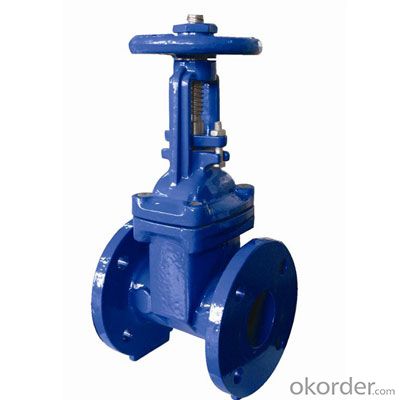
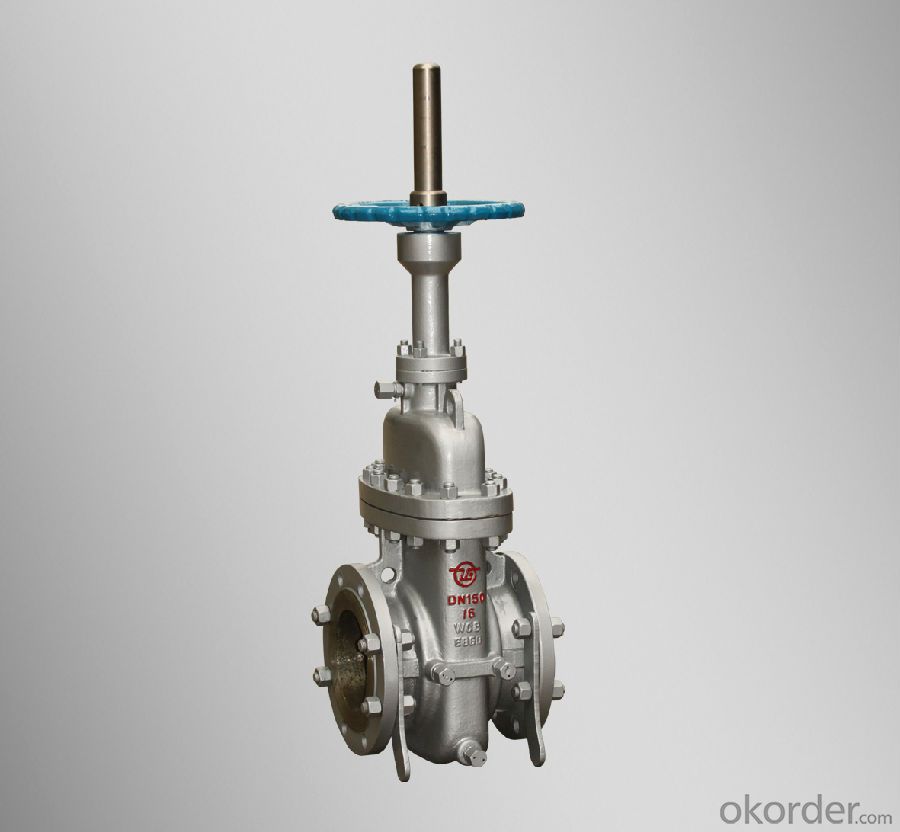
4. Gate valve Specification
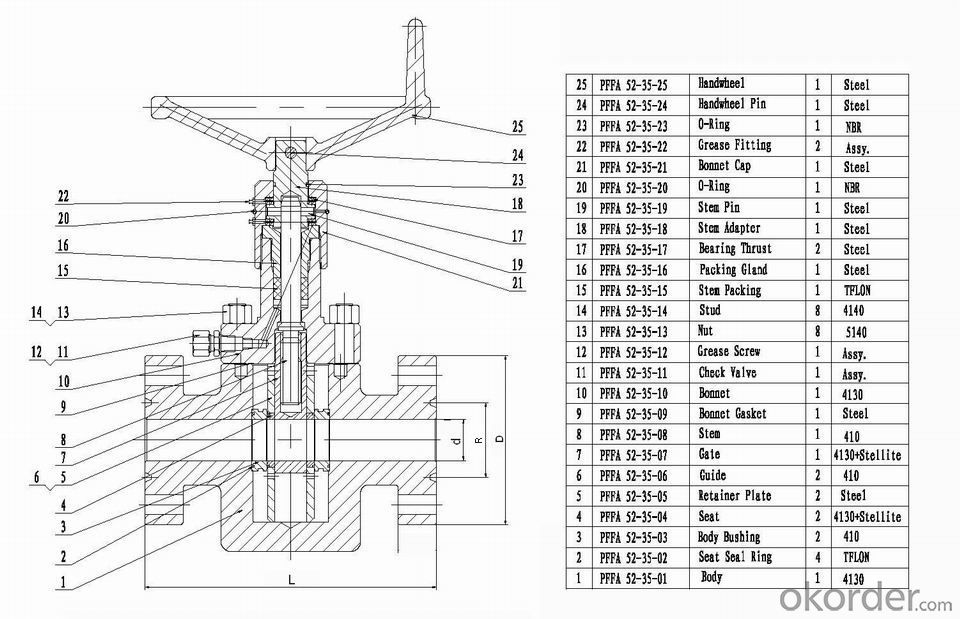
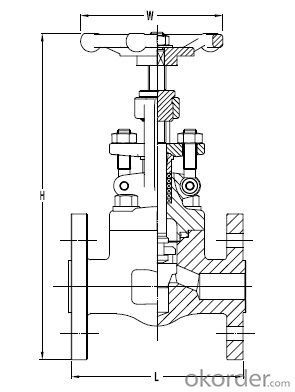
5.FAQ
1. What's are the characteristics of gate valve?
The distinct feature of a gate valve is the sealing surfaces between the gate and seats are planar, so gate valves are often used when a straight-line flow of fluid and minimum restriction is desired. The gate faces can form a wedge shape or they can be parallel.
2. What is the work principle of gate valve ?
The gate faces can form a wedge shape or they can be parallel. Gate valves are primarily used to permit or prevent the flow of liquids, but typical gate valves shouldn't be used for regulating flow, unless they are specifically designed for that purpose. Because of their ability to cut through liquids, gate valves are often used in the petroleum industry.
3. What is the structure?
Bonnets provide leakproof closure for the valve body. Gate valves may have a screw-in, union, or bolted bonnet. Screw-in bonnet is the simplest, offering a durable, pressure-tight seal. Union bonnet is suitable for applications requiring frequent inspection and cleaning. It also gives the body added strength. Bolted bonnet is used for larger valves and higher pressure applications.
- Q: Standard and specification for pressure test of valves
- (11) when the valve with drive device is tested and its tightness is tested, the sealing test shall be carried out by using the driving device to close the valve. For manual drive units, seal test shall also be done with the actuating closing valve.(12) the by-pass valve installed on the main valve after the strength test and the sealing test. The strength and tightness test of the main valve is carried out. The main valve should be opened when the closing member is opened.(13) iron valve strength test, the application of Pratia tapping valve and valve cover, check whether there is any leakage.(14) the valve test, in addition to the provisions of the plug valve to allow sealing surface oiling, other valves are not allowed in the sealing surface of the oil test.(15) when the valve pressure test, the blind plate on the valve pressure should not be too large, so as to avoid deformation of the valve, affecting the test results (cast iron valve if pressed too tight, will be damaged).(16) after the valve test pressure, should promptly remove the water and clean the valve, should also be prepared for the test record.
- Q: What does the "PN" mark on the valve mean?
- The valve will usually be marked with "DN.PN." these two signs,DN refers to the valve path, and PN refers to the pressure levelFor example: DN25, PN16Refers to the valve diameter of 25mm valve, the pressure is 16 kg (1.6Mpa)
- Q: The difference between fire general valve and fire fighting special valve
- Fire fighting valves are mainly signal valves and alarm valves and water indicators, etc., other gate valves, butterfly valves, pressure relief valves and filters are common valves.
- Q: What does the whole copper valve mean?
- Except the handwheel, all the material of the valve body is copper
- Q: I used to do pumps, and now feel the future of the valve better, looking for a valve to do proxy, but my own economic strength is not good, I do not know if there is no possible to do?
- Many of them are now in Fujian valve valve agent many manufacturers are now seeking cooperation in the valve and pump after all or many different places to the other industries also need a process to proxy depends on your targeted customer base is better than the brand also has the advantage of brand price comparison
- Q: What valve does the high pressure by-pass valve DN254 * 800 belong to?
- High pressure bypass valve DN254 * 800 belongs to bypass valve.Function of bypass systemThe turbine by-pass device mainly has three functions of starting and overflowing:1 in the cold, warm and hot, the bypass system can realize the optimal unit start-up and shut-down in turbine operating conditions, start and stop curve can meet the requirements, two types of automatic and manual operation, with the establishment of the boiler steam temperature and steam turbine components. To shorten the start-up time.2. when the turbine is tripped, the bypass system can operate at a high speed and reach full open position.3., when the turbine load changes, the by-pass system has the regulating function, and the safety valve action can be avoided and the operation stability of the boiler can be improved when the instantaneous change of the moving state.The function of the bypass control valve:The main function of steam turbine bypass system is high pressure steam adjusting throttling and superheated steam cooling. The bypass valve to perform these functions at the same time and in low noise, small vibration, valve resistance to achieve its goal of temperature and pressure loss under the condition of touch.
- Q: What do letters represent in the QF-2 and PX-32 valve models?
- Other letters of the valve indicate explanations and regulations! You never ask again when you ask again!
- Q: How much is the 150LB of the valve?
- The valve according to the material is divided into cast iron valves, cast steel valves, stainless steel valves (201, 304, 316), chrome molybdenum steel, chromium molybdenum vanadium steel valves, valve, dual phase steel valves, plastic valves, non-standard customized valve material etc..
- Q: What is the BV valve?
- It should be the meaning of BREATH VALVE, breather valve
- Q: How are the types of valves classified?
- Valve (Famen) is a control component in the fluid delivery system. It has the functions of closing, adjusting, guiding, preventing reverse flow, stabilizing voltage, shunting or overflow and releasing pressure.classificationFunction and use(1) cut off categories: such as gate valve, globe valve, plug valve, ball valve, butterfly valve, needle valve, diaphragm valve and so on. Cut off valve, also known as closed-circuit valve, stop valve, whose role is to connect or cut off the pipeline medium.Check valves, also known as check valves or non-return valves, check valves belong to an automatic valve, its role is to prevent the pipeline medium backflow, to prevent the pump and drive motor reversal, as well as the leakage of container media. Pump water off the bottom valve check valve also belongs to class.The function of the relief valve is to prevent the medium pressure in the pipeline or device from exceeding the required value so as to achieve the purpose of safety protection.Control valve, throttle valve and pressure reducing valve, its role is to regulate the media pressure, flow and other parameters.(2) vacuum type: such as vacuum ball valve, vacuum flapper valve, vacuum air charging valve, pneumatic vacuum valve, etc.. Its function is to change the direction of the air flow in the vacuum system, adjust the air flow rate, cut off or connect the vacuum system of the pipeline, and the component is called the vacuum valve.(3) special uses such as pigging valves, vent valves, drain valves, exhaust valves, filters, etc.. The exhaust valve is an essential auxiliary component in the pipeline system. It is widely used in boilers, air conditioners, petroleum, natural gas, water supply and drainage pipelines. Often installed in the commanding heights or elbows, etc., to exclude excess gas pipeline, pipe road to improve the use of efficiency and reduce energy consumption.
Send your message to us
Valve with Positioner AVP300/301 on Sale
- Loading Port:
- Tianjin
- Payment Terms:
- TT OR LC
- Min Order Qty:
- 100 pc
- Supply Capability:
- 10000 pc/month
OKorder Service Pledge
OKorder Financial Service
Similar products
Hot products
Hot Searches
Related keywords
